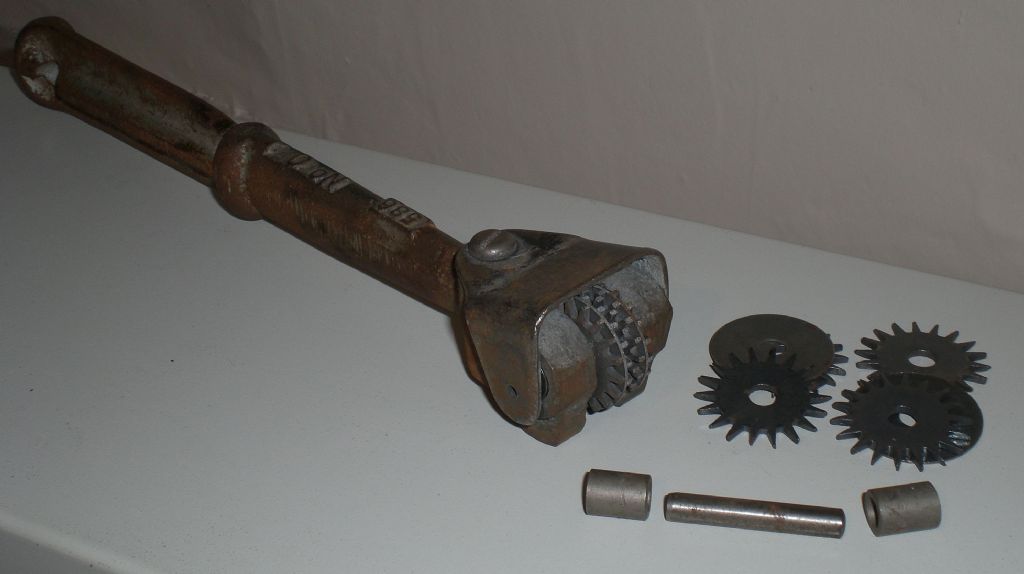The reason for the brake dresser is that as the diamond wheel starts to become true again, the brake dresser automatically reduces the friction of the stone to the wheel.
Using a lump of stone to do your dressing, I personally don’t think you will get a perfectly dressed diamond wheel, as it will be relying on ‘finger feel’ or sight to detect when it is truly flat and square.
For those who have never seen a brake dresser, here is mine. The carb wheel is gently fed onto the diamond wheel face, and starts to spin, being driven by the diamond wheel. As it is running up, a centrifugal brake (on the other end of the spindle) starts to put a holding pressure onto the dressing wheel, so starting to gradually wear the face off the diamond wheel, and as stated above, as the diamond wheel is trued, the brake pressure reduces.
BTW, the 3 diamond wheels in the background, the two dirty ones are diamond cut off wheels, about 3/32″ wide, the clean one is just a standard narrow grinding wheel. All for use on the surface grinder.
The use of diamond bonded wheels in the model engineering fraternity has only recently, in the last few years, started to be used. So really, although the wheels can be obtained reasonably cheaply, the methods of dressing haven’t yet caught up with us from industry. So that means, until the dressing facilities really come down in price, or you are lucky and find a cheap one, you just might be stabbing in the dark with theories about how to dress them correctly.
Here is a second hand one at a very reasonable price
http://www.jubileemactools.com/website-pages/NORTON__No2__Brake_Dresser-p-398.html
dcosta.


 fficial&client=firefox-a
fficial&client=firefox-a 



